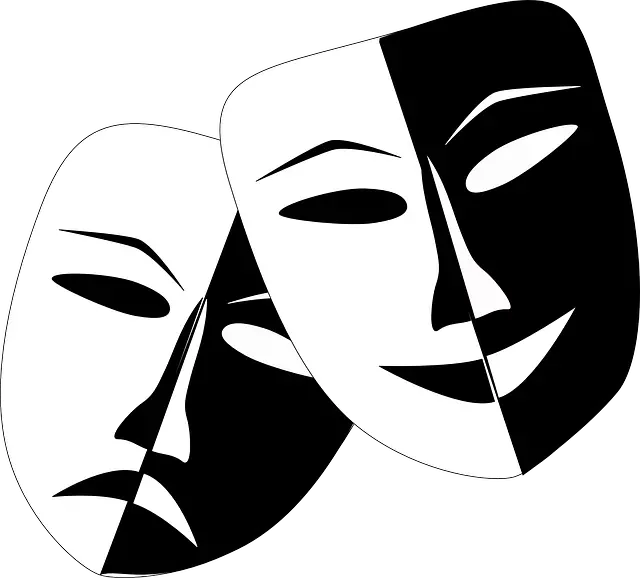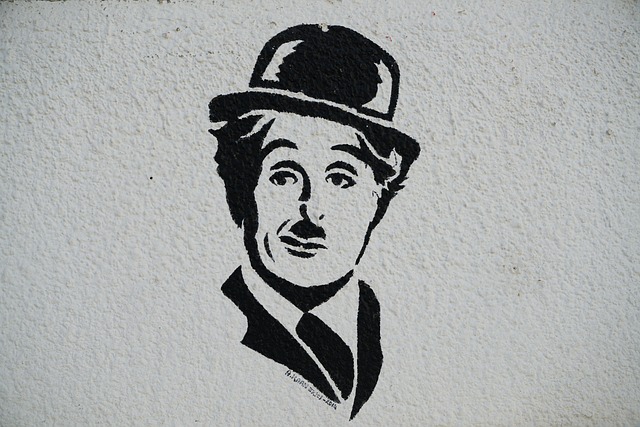Both comedy and tragedy usually tell a story about human beings and their struggles. However, comedy usually has a happy ending, while tragedy typically ends in disaster. Comedy often makes use of humor to entertain its audience. Tragedy, on the other hand, is designed to make its audience feel pity or fear. One of the biggest differences between comedy and tragedy is the way they are performed. Comedy is typically performed for laughs, while tragedy is meant to be taken more seriously.
What is comedy?
(Photo by Chauhan Moniz on Unsplash )

Comedy is a genre of entertainment that aims to make people laugh or feel amused. It typically includes humorous stories, jokes, satire, sarcasm, irony, and parody. Comedy can take many forms, including stand-up comedy, television sitcoms, movies, cartoons, and theater productions.
Comedy often involves exaggerating or highlighting the absurdities of everyday life, or poking fun at social norms and conventions. It can also be used as a way to comment on current events, politics, or other serious issues, by using humor to critique or satirize them.
Overall, comedy is a form of entertainment that aims to provide enjoyment and laughter to its audience, often by using clever wordplay, unexpected twists, and relatable situations.
What is tragedy?
In its most basic form, tragedy is the story of a protagonist who experiences a great fall from grace. The tragic hero is usually someone of high status or great importance whose fall from power is caused by their own hubris or flaws. Tragedy often ends in the death of the main character, which serves as a warning to others not to repeat their mistakes.
Comedy Vs. Tragedy – Key differences
Comedy and tragedy are two contrasting genres of storytelling that have key differences in their structure, tone, and themes. Here are some of the key differences between comedy and tragedy:
Tone: Comedy is generally light-hearted, humorous, and entertaining, while tragedy is typically serious, sad, and emotionally intense.
Plot: In a comedy, the plot often revolves around a series of misunderstandings, conflicts, or misadventures that are resolved in a positive and uplifting way. In a tragedy, the plot usually involves a central character who faces a series of obstacles and ultimately meets with a tragic fate.
Characters: The characters in a comedy are often exaggerated, quirky, or comedic archetypes, while those in a tragedy are usually more complex and nuanced, with deeper emotional and psychological motivations.
Themes: Comedies often explore themes such as love, friendship, and the human condition, while tragedies tend to focus on weightier themes such as mortality, fate, and the nature of suffering.
Resolution: In a comedy, the story generally ends on a positive note, with conflicts resolved and characters reconciled. In a tragedy, the story often ends in death, destruction, or irreversible loss.
While both comedy and tragedy are forms of storytelling that explore the human experience, they differ in their tone, plot, characters, themes, and resolution.
Examples of tragedies
Tragedies are dramatic works that typically depict the downfall of a main character or characters due to a combination of their own flaws and external circumstances. Here are some examples of famous tragedies from literature, film, and history:
- “Romeo and Juliet” by William Shakespeare
- “Hamlet” by William Shakespeare
- “Macbeth” by William Shakespeare
- “King Lear” by William Shakespeare
- “Oedipus Rex” by Sophocles
- “Antigone” by Sophocles
- “Death of a Salesman” by Arthur Miller
- “The Great Gatsby” by F. Scott Fitzgerald
- “A Streetcar Named Desire” by Tennessee Williams
- “The Godfather” (film) directed by Francis Ford Coppola
- The sinking of the Titanic (historical event)
These are just a few examples, as there are many other tragic stories and events throughout history and in contemporary culture.
Examples of comedies
Comedies are dramatic works that are intended to be humorous and make people laugh. Here are some examples of famous comedies from literature, film, and television:
- “A Midsummer Night’s Dream” by William Shakespeare
- “The Importance of Being Earnest” by Oscar Wilde
- “The Three Stooges” (film)
- “The Marx Brothers” (film)
- “Friends” (television series)
- “The Office” (television series)
- “Seinfeld” (television series)
- “Monty Python and the Holy Grail” (film)
- “Airplane!” (film)
- “Bridesmaids” (film)
These are just a few examples, as there are many other comedic works and performances throughout history and in contemporary culture.
What are the characteristics of tragedy?
There are a few characteristics that are common in tragedy, which is why it is often seen as a more serious genre than comedy. Tragedy typically deals with important and controversial topics, such as death, War, and love. The plot often has a sense of inevitability, and the characters are usually struggling against overwhelming odds. There is often a tragic flaw in the protagonist that leads to their downfall. Despite all of this, tragedy can be incredibly moving and cathartic for both the characters and the audience.
What are the characteristics of comedy?
The characteristics of comedy are light-heartedness, humor, and a positive outlook. In contrast to tragedy, which is often dark and depressing, comedy is meant to be entertaining and make people laugh. There are many different types of comedy, ranging from slapstick to satire, but all share the common goal of making audiences happy.
What is the difference between tragedy and comedy according to Aristotle?
Aristotle believed that tragedy and comedy differed in their overall purpose. Tragedy, he thought, should evoke feelings of pity and fear in the audience, while comedy should produce feelings of amusement and laughter. In addition, Aristotle believed that tragedy was more serious and formal than comedy. He also thought that tragedy dealt with more important topics than comedy, such as death and suffering.
What is the difference between Shakespeare’s comedy and tragedy?
When it comes to Shakespeare, comedy and tragedy are two very different genres. Comedy is light-hearted and often ends with a happy ending, while tragedy is dark and often ends in death. Although both genres can be found in Shakespeare’s plays, they are usually quite distinct from one another.
How do tragedy and comedy compare features?
There are several key ways in which comedy and tragedy differ. Firstly, tragedy is typically much more serious and somber in tone than comedy. Comedy often makes use of humor, whereas tragedy does not. Tragedy also tends to deal with more weighty topics and explore the darker side of human nature, whereas comedy is often lighter in subject matter and tone. Finally, tragedy typically ends with the death of the protagonist or other major characters, while comedy usually has a happier ending.
Why we need both comedy and tragedy
(Image by Clker-Free-Vector-Images from Pixabay )

Comedy and tragedy are both important forms of art that serve different purposes, and together they provide a more complete picture of the human experience.
Tragedies explore the darker side of human nature and the consequences of our actions. They can be emotionally intense and difficult to watch, but they also provide insight into the complexities of life and the human condition. Through tragedy, we can learn about the dangers of hubris, the inevitability of death, and the importance of moral responsibility.
Comedies, on the other hand, are designed to make us laugh and provide a sense of joy and levity. They often explore the absurdities of life and highlight the human capacity for resilience and humor in the face of adversity. Comedies can help us see the lighter side of things, find common ground with others, and find relief from stress and anxiety.
Together, comedy and tragedy provide a more complete understanding of the human experience. They help us appreciate the full range of emotions and perspectives that make up our lives, and allow us to explore difficult issues in a more accessible and engaging way. Without either form of art, we would be missing an important part of our cultural and emotional landscape.
Featured Image By – Engin Akyurt from Pixabay








